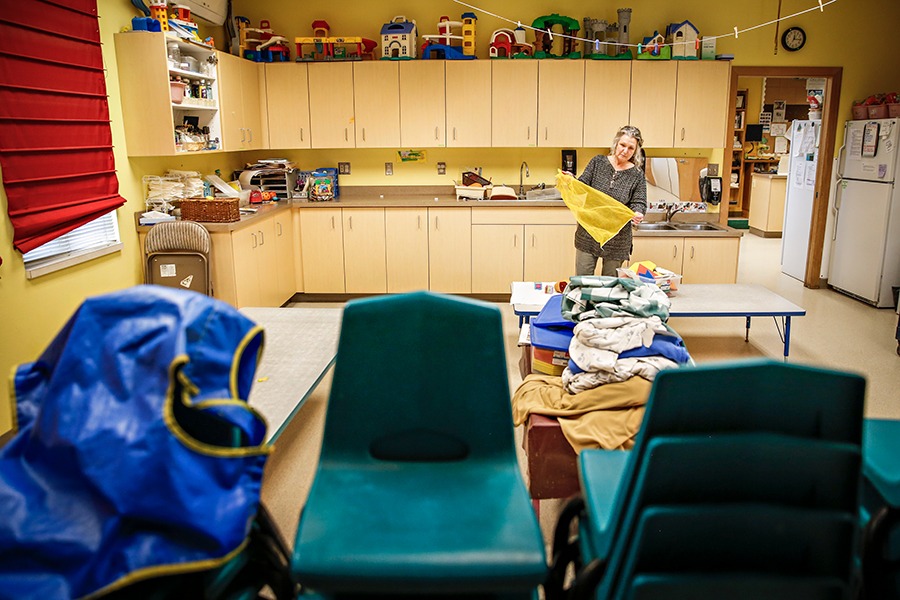Even as Childcare Providers Expand, High Costs and Workforce Recruitment Remain Problematic
Industry leaders are working to expand access to childcare and brainstorm ways to accommodate the workforce in Flathead County, where currently about 30% of its childcare demand is met
By Maggie Dresser
Following years of increased demand for childcare at The Birds Nest in Kalispell, owner Corinne Kuntz has been determined to accommodate parents in the growing Flathead Valley after the pandemic exposed weaknesses and dysfunction in the industry. To meet the needs of local families, she recently broke ground on a 14,000-square-foot facility that will provide care for 120 kids and is slated for completion by the end of the year.
Using pandemic-era American Rescue Plan Act (ARPA) funds, Kuntz has been working to expand her childcare service to try and repair the broken system that has resulted in a shortage of providers and skyrocketing tuition in an industry that is unattractive to the local workforce.
“Childcare does not have good profit margins – they are pretty slim,” Kuntz said.
Kuntz charges families $1,500 per month for full-time childcare so that she can pay her employees a livable wage of an average of $21 per hour, leaving a profit of about $100 per child.
Hourly wages for teachers at Birds Nest have grown from about $16 a few years ago, but Kuntz said those increases were necessary to recruit and retain a workforce that’s historically been difficult to capture. The wage increases have also priced many families out, creating a gulf between access and employee retention.
With the new sizable facility in Kalispell, Kuntz is finding creative ways to keep costs down while keeping up with wages. For example, she’s working to partner with local businesses to set up a membership fee for employees to prevent waitlists, and she’s also looking to rent out space for events to help offset costs.
“We’ve got some irons in the fire to help bridge the gap,” Kuntz said.
As a member of the Kalispell Chamber of Commerce’s Child Care Initiative launched by CEO Lorraine Clarno in 2021, Kuntz has been working with other providers and business leaders to create more accessibility for families in the Flathead Valley.

Chamber officials collaborated with local childcare providers, business owners, schools, nonprofits, and Flathead Valley Community College (FVCC) to form the Child Care Task Force, which works to come up with solutions like scholarships, home-based childcare options, outreach and advocacy, and creating a partnership to open new facilities.
According to a Montana Department of Labor and Industry (DLI) report, more than 66,000 Montana parents were unable to fully engage with the labor force due to a lack of childcare, while 59% of counties are identified as childcare deserts.
In Flathead County, childcare supply in 2023 met only 31% of the demand for children under age 6, and 24% for children under age 2. In Sanders County, supply met only 5% of the demand for children under 6, and 4% for children under age 2.
Statewide, about 80% of Montana parents participate in the labor force; however, mothers work far less than fathers do, with 74% of mothers working or actively seeking work compared to 88% of fathers.
Business leaders in Kalispell say the lack of childcare access has caused a dramatic impact on the workforce, but the Chamber’s Child Care Initiative has been working to solve some of those issues.
Clarno said there’s been a significant increase in childcare providers in recent years – including Kuntz’s expansion at The Birds Nest – but other factors, including the imbalance of profit margins and workforce recruitment, remain problematic.
With the 69th Montana Legislature underway, Clarno is focused on advocating for bills related to childcare to help create more accessibility.
“We will be pushing to help legislators see this as an infrastructure and economic issue,” Clarno said. “It’s far beyond being a woman’s issue or a family issue – we’ve got to shift that mindset.”
Childcare leaders are pushing to expand the eligibility for the state’s Best Beginnings Care Scholarship, which is funded through federal and state money and is currently dedicated for families earning less than 185% of the Federal Poverty Level.

At Discovery Developmental Center in Kalispell, Director Collette Box said only about 25% of her clients qualify for the Best Beginnings Care Scholarship, but she hopes that could grow to 60% if new legislation is passed.
As workforce recruitment and retention remains an issue, Box said there’s another bill being drafted that automatically qualifies childcare employees for the Best Beginnings scholarship, which could help her retain her staff.
According to DLI data projections, experts estimate there will be more than 540 annual job openings for childcare workers through 2032, which is largely due to the low wages of an average of $12.73 per hour statewide.
“There’s a lot of providers that have openings, but they can’t fill them because they can’t find the staff,” Box said. “There’s this whole push of how to recruit people into the field and let them know it’s a great profession, but nobody is going into the field professionally – let alone work as an aide for $15 an hour.”
Box says while the issues surrounding childcare are not new, the pandemic exposed the dysfunction when the industry shut down and parents couldn’t go back to work.
“The system has never been workable because it’s always been based on families paying tuition and providers charging what they can afford – which means they can’t pay their employees,” Box said.